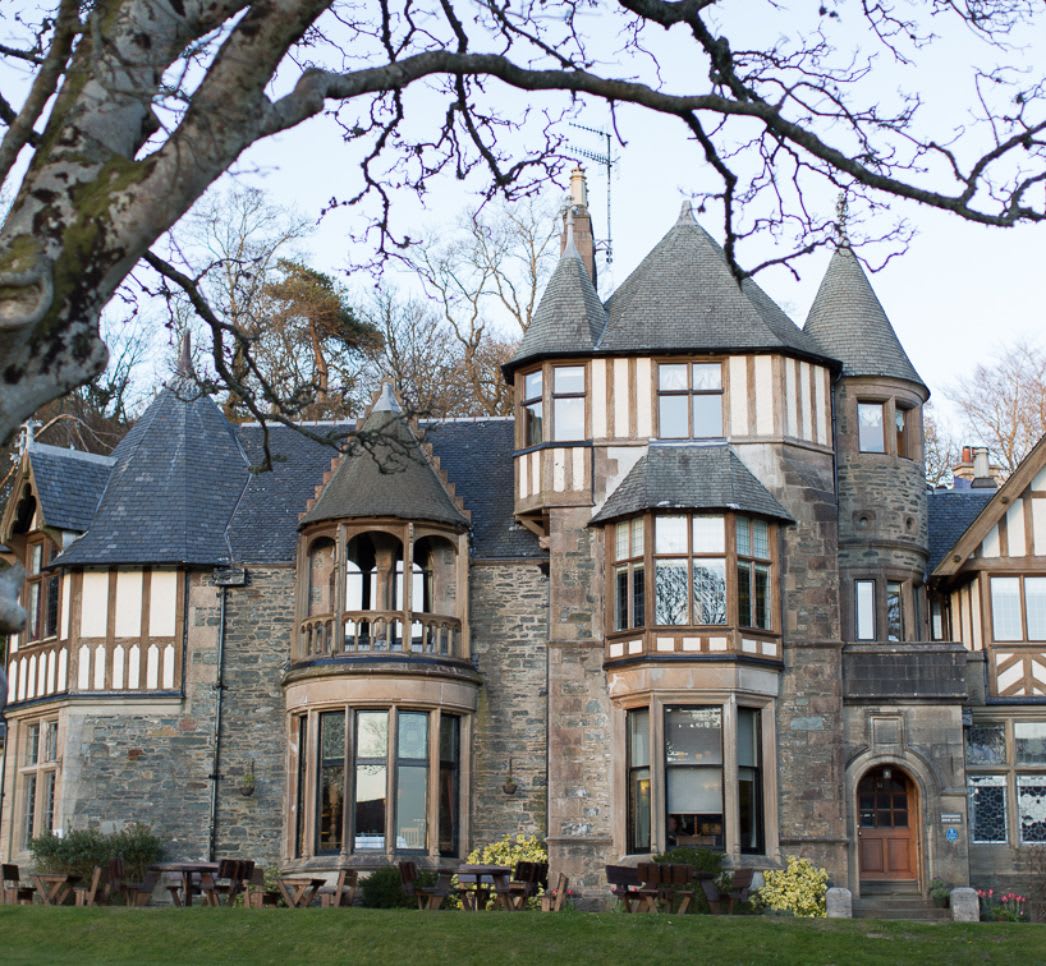
Leiper came to know quite a few of the big Glasgow industrialists of the 19th century during his commercial work. This offered him an introduction into domestic architecture and commissions to design and redesign some of the grand country houses and mansions of the Glasgow aristocracy and rich merchant class in the 19th Century, in and around Helensburgh. He also designed the interior of the Russian imperial yacht in 1880.
Having worked on nearby Knockderry Castle and Lodge for the Templeton family (1896), it was fitting that Leiper be commissioned by wealthy cotton trader David Anderson to design a major extension to Knockderry House, as well as help design some of the interiors. Leiper’s style progressed over his career from Early French to Scottish Baronial, neo-Jacobian and Arts & Crafts. Knockderry House squarely sits in the Scottish Baronial tradition with turrets, balconies and dormer windows. However Leiper wasn’t always respectful of the fabric of the existing building and he took away some original stone features to extend the house outwards with large bay windows at the front. The beautiful stone lintels of the original building were found hidden under the porch which Leiper added on in his extension work.
There is a Jacobean influence in the design too, with the use of carved wood and motifs. Jacobeans made use of exotic woods brought in from Asia and the Americas and Leiper seems to have used some of this technique in the interior decoration. The owner of the house, Anderson, traded with India and the influence of Indian design is evident in the heavily carved archways found in the drawing room and dining room. The wood used outside is Burmese Teak, strong and beautifully preserved, probably another import from Mr Anderson’s trade contacts. The wood used inside is of mughal (or mogul) origin and was actually carved by Indian carvers, two of whom are buried in Cove cemetery. The spindles used in the morning room are in the tradition of Indian high caste carvings. It took a lot of careful renovation to display the wood in its original state, stripping layers of gloss paint applied over the years.